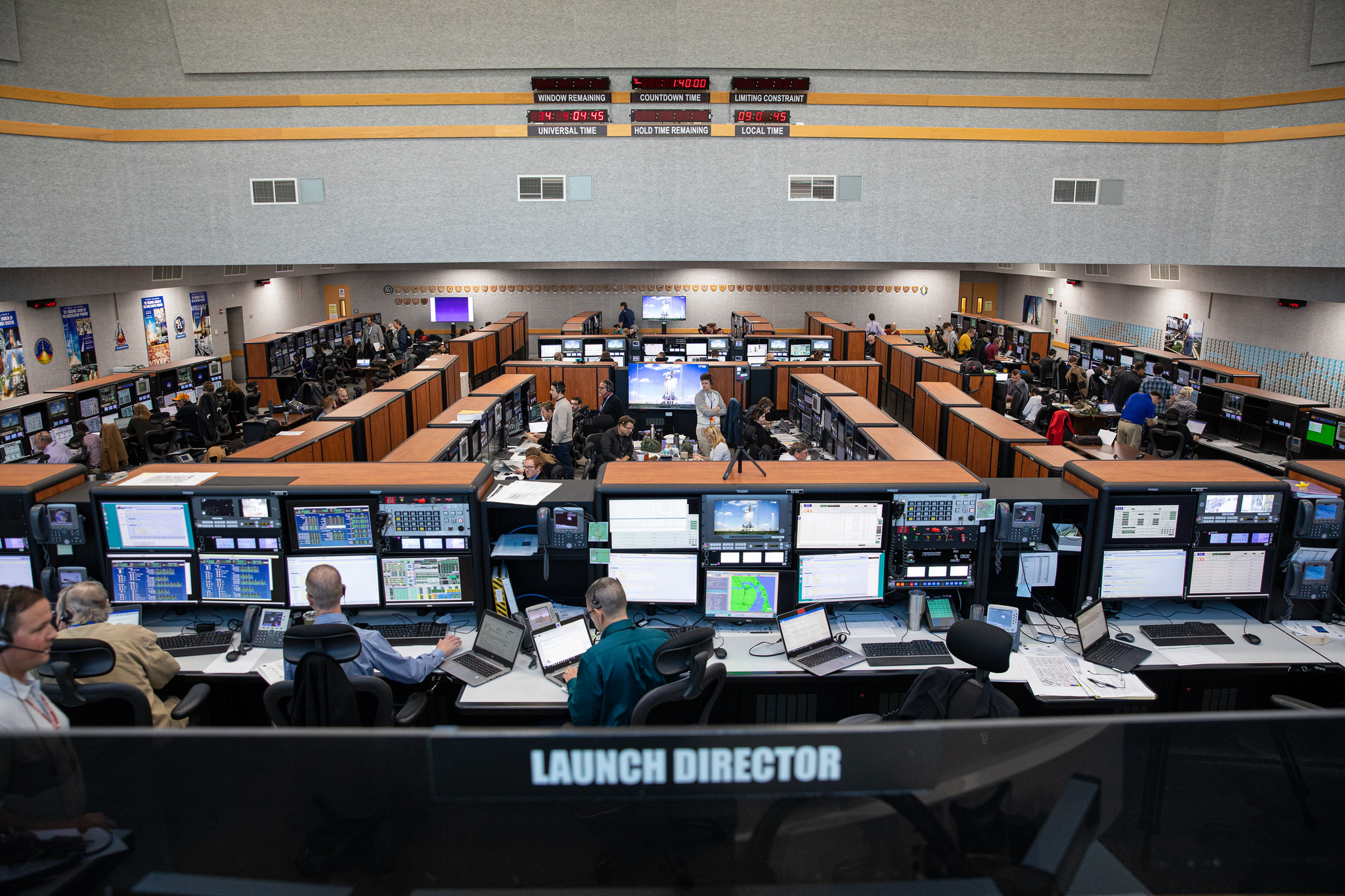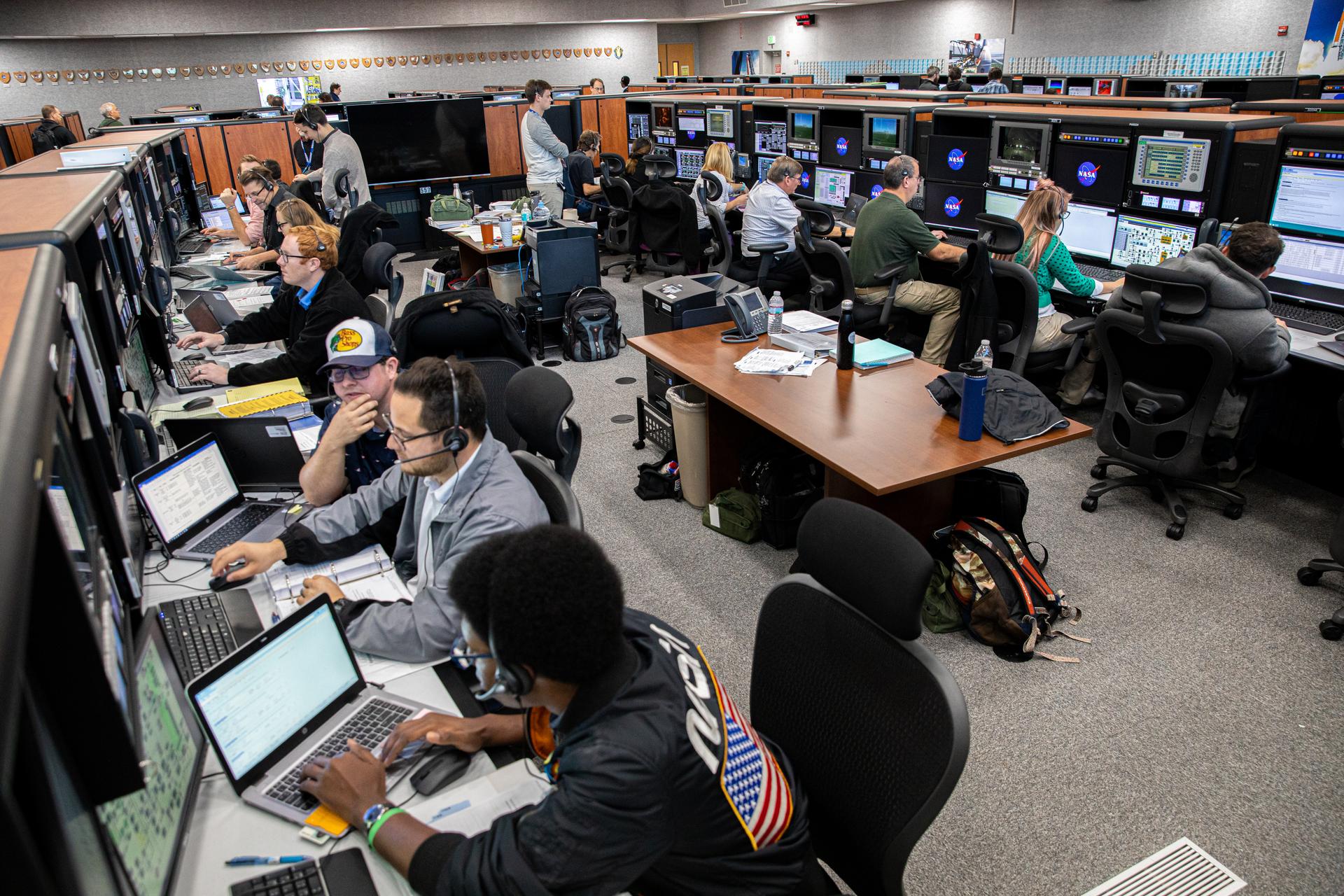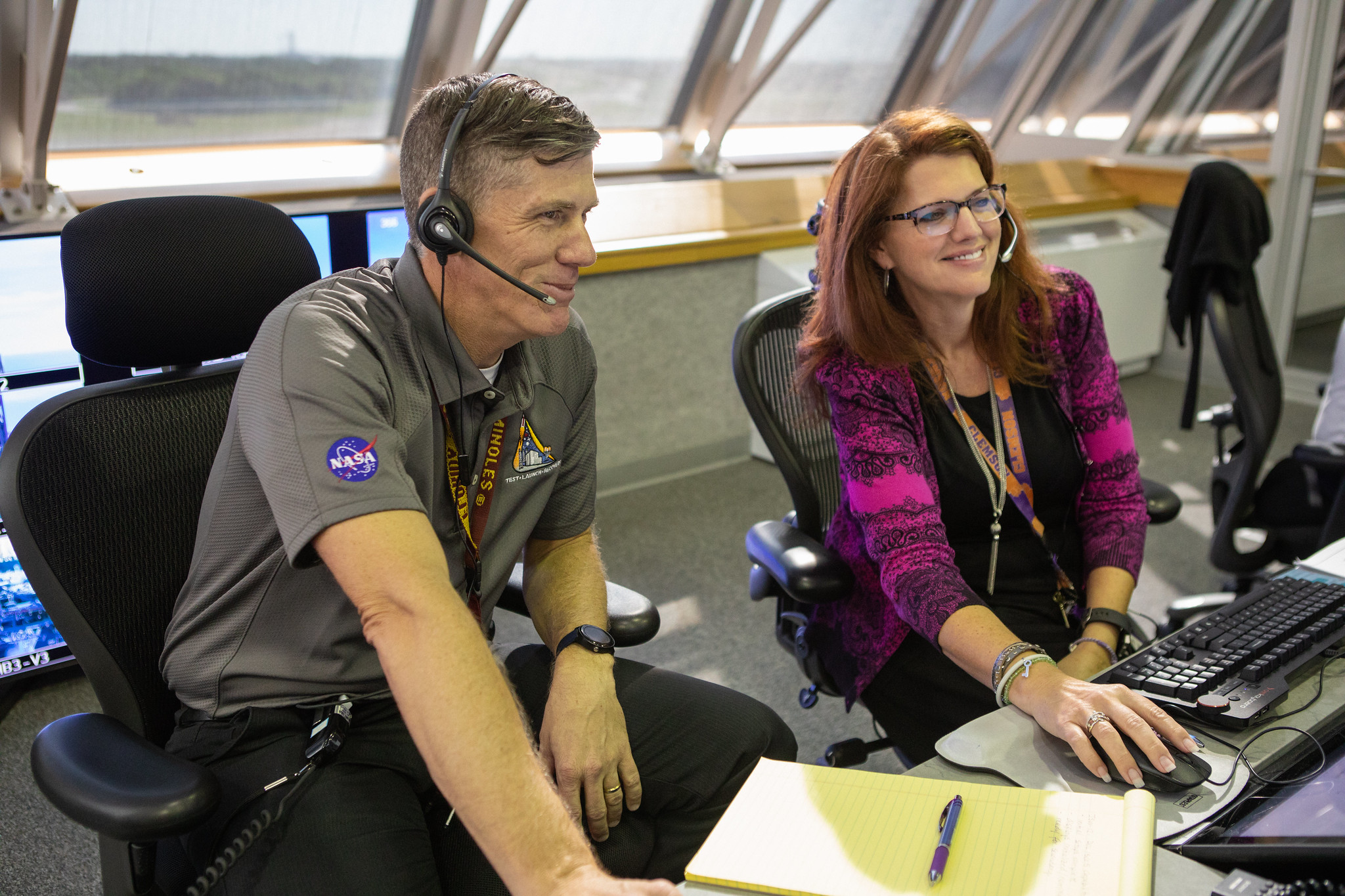
By Danielle Sempsrott
NASA’s Kennedy Space Center
When all eyes in Firing Room 1 of launch control are focused on systems supporting NASA’s Space Launch System (SLS), topped with the Orion spacecraft, for the Artemis I mission around the Moon, the launch director will rely on a unique team of problem solvers to ensure that the launch is a success.
Those individuals, part of NASA’s Exploration Ground Systems (EGS) program, will be sitting at the integration console in the Launch Control Center at the agency’s Kennedy Space Center in Florida, ready to tackle any issues that may arise and give the final technical recommendation for launch just before liftoff.
“We take the launch commit criteria, those measurements that show what the safe ranges for launch are, and ensure the ground and vehicle components are sequenced correctly before liftoff,” said Alex Pandelos, primary ground launch sequencer operator for Artemis I and launch integration operations project engineer. “And then, if it’s not safe to launch, we’re the ones that can stop it.”
Situated in the middle of Firing Room 1, the integration console is filled with a team of engineers that specialize in different disciplines of launch operations. On launch day, 12 of these engineers from NASA and contractor Jacobs will be sitting at this console, working together to monitor the health of the rocket and the ground support equipment, and then jumping in if a problem pops up.
“In a perfect world, we just get really good seats for launch. But realistically, that almost never occurs,” said Anton Kiriwas, backup launch project engineer (LPE) for Artemis I. “If one of the discipline teams reports seeing an anomaly – that doesn’t necessarily mean it’s a violation, it’s not necessarily an emergency, but it’s an anomaly – we’ll go ahead and talk through that.”
If an anomaly does occur on launch day, the integration console team will first determine if there are possible impacts to other systems, how and if the problem impacts the launch countdown timeline, and if they can come up with a solution that will allow them to remain in a launch configuration. To discuss all of this, the lead LPE will take the team onto a separate communications network – the anomaly loop – that is connected to technical teams at Johnson Space Center in Houston and Marshall Space Flight Center in Huntsville, where some of the flight hardware was manufactured. Once the team agrees on a solution, and has a final recommendation for launch, the LPE will take that recommendation to the NASA test director and launch director for the final call.
Leading that discussion for Artemis I will be EGS Senior Technical Integration Manager Phil Weber, who worked at the integration console during the shuttle program and is now training Kiriwas and Tony Bartolone in the LPE role for future launches under the Artemis program.
During those, Bartolone and Kiriwas will rotate as the primary and backup LPE on console. Weber remains the lead LPE for Artemis I on launch day and ultimately is responsible for heading the resolution discussions and communicating whether the team’s recommendation is a go or no go. However, Bartolone and Kiriwas will be standing by, ready to jump in and lead separate discussions should a second or third problem arise.

“The magnitude of being responsible for the technical integration of all anomalies that are encountered during launch countdown is very sobering,” said Bartolone. “The launch director is relying on the technical assessment and input of the LPEs, and there’s no room for error when the clock is ticking and the whole world is watching.”
Despite extensive testing, unpredictable events can happen on launch day, such as unexpected measurements coming off of the vehicle, causing the team to flag the issue and work toward a solution before the rocket can lift off. In order to better prepare for potential problem scenarios, the team is working their way through several Artemis I launch simulations. By the time the SLS rocket blasts off from Kennedy’s Launch Pad 39B, the team will have gone through a total of 20 simulations.
“There are close to 490 different launch commit criteria and somewhere on the order of 12,000 measurements being monitored, so it requires a lot of training to make sure the team is ready to react accordingly if we encounter an issue,” said Pandelos. “These sessions help build confidence in our systems and really demonstrate that our team knows how to respond if something goes wrong.”
All of this training, held under the leadership of Artemis I Launch Director Charlie Blackwell-Thompson, helps ensure that the team is ready – ready to handle whatever may come their way on launch day, and ready to safely send humans to the Moon once more.
“We are going, journeying to the Moon and, one day, on to Mars,” said Blackwell-Thompson. “As the team finds itself working through issues, ensuring that the Artemis vehicle is go for launch, the integration console will be in the middle of those discussions. And when their recommendation comes forward, I know it is based on careful evaluation and sound engineering.”





























